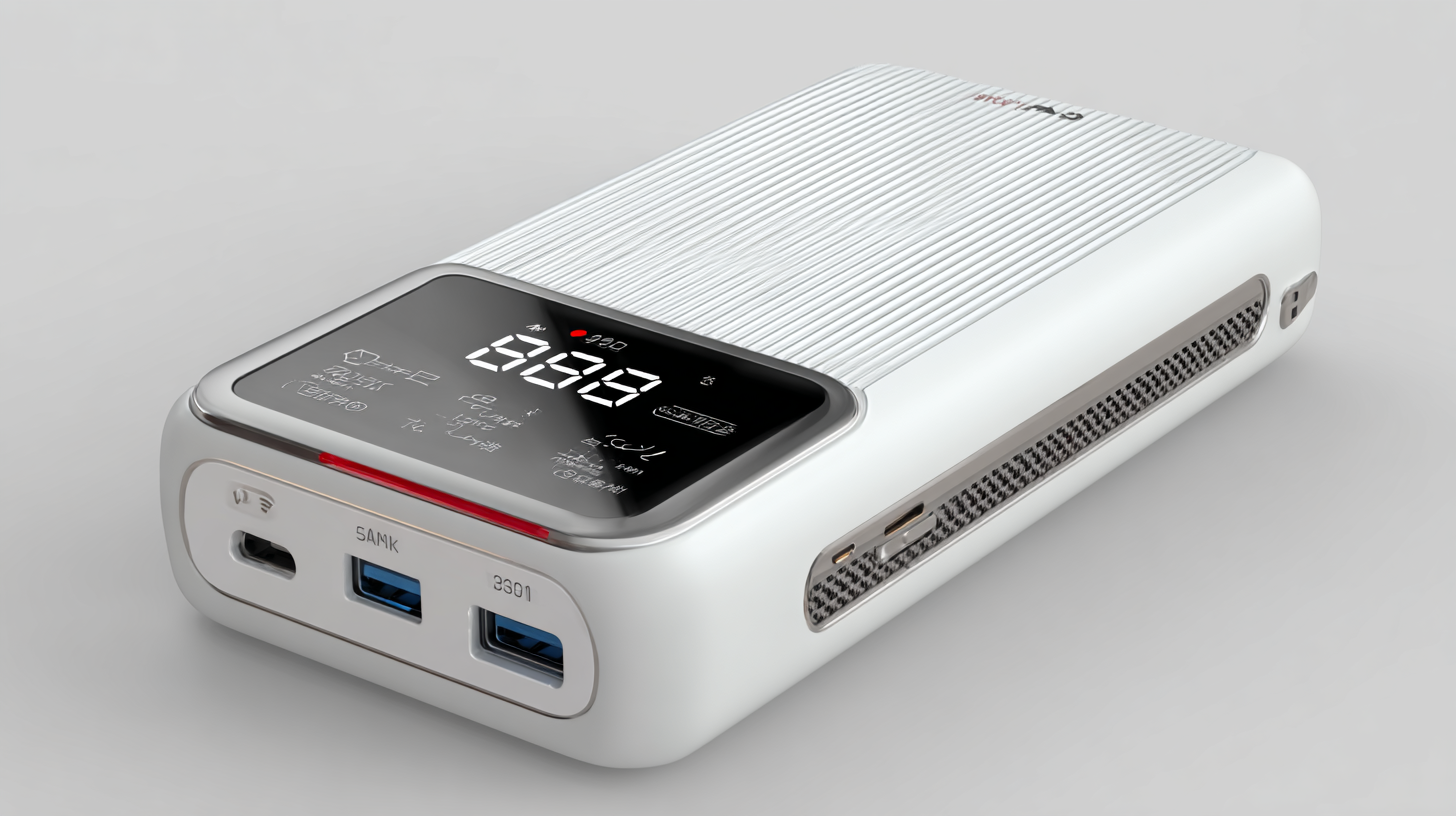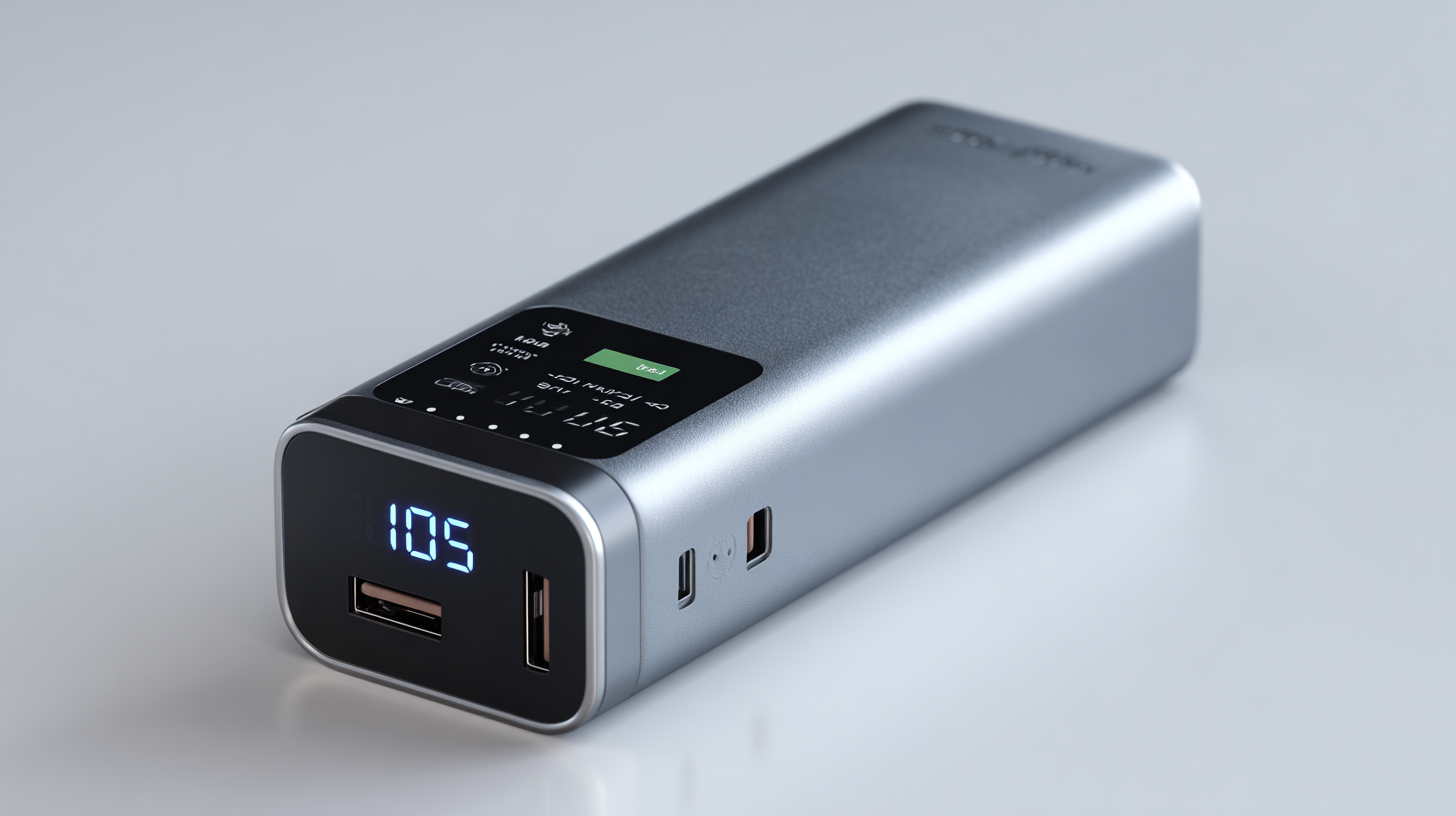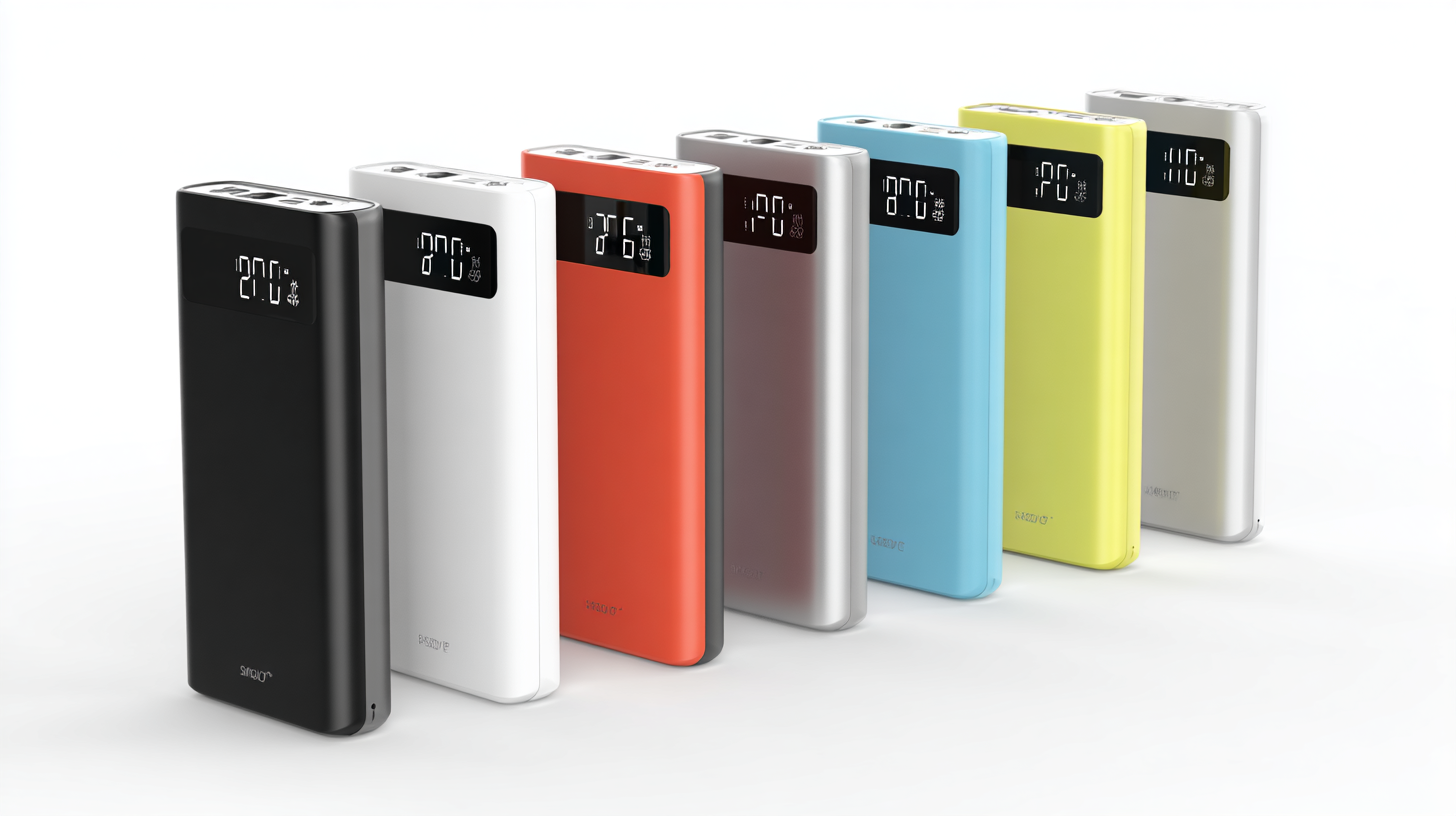Leave Your Message
In the rapidly evolving landscape of portable charging solutions, the High Capacity Power Bank market stands at the forefront of innovation and consumer demand. As technology advances and our reliance on electronic devices grows, the need for efficient and reliable power sources has never been more critical. This blog explores the emerging trends and insights that are shaping the future of High Capacity Power Banks leading into 2025. With a focus on the mantra "精工细造,中国制造,服务世界", we will delve into how precision engineering and the manufacturing prowess of China are meeting global energy needs.

From enhanced battery technologies to sustainable production practices, we will uncover the factors driving market growth and consumer preferences in this essential sector. Join us on this journey as we unlock the potential of High Capacity Power Banks and their role in powering our connected world.
As the demand for high-capacity power banks continues to surge, understanding the key features that drive optimal performance becomes essential for consumers and businesses alike. According to a recent report by MarketsandMarkets, the global power bank market is projected to reach $14.3 billion by 2025, growing at a CAGR of 20.4%. As this market expands, power bank manufacturers are prioritizing features that enhance user experience and efficiency.

One of the critical features to consider is the charging speed, which is often denoted by the power bank’s output amperage. Fast charging capabilities, such as Quick Charge or Power Delivery technologies, can significantly decrease the time needed to fully charge devices. Additionally, battery capacity, usually measured in milliampere-hours (mAh), remains a vital consideration; reports indicate that power banks with capacities of 20,000 mAh and above are becoming increasingly popular, catering to users who rely on multiple devices throughout the day.
Furthermore, safety features cannot be overlooked. Advanced power banks now incorporate mechanisms such as overcharge protection, short circuit protection, and temperature control, which are critical for preventing damage to devices and ensuring user safety. A study by Statista shows that 35% of consumers consider safety features a top priority when selecting a power bank. As the market evolves toward 2025, these features will not only shape consumer choices but also elevate industry standards in performance and safety.
As the demand for portable power continues to rise, emerging technologies are dramatically reshaping the design and functionality of high-capacity power banks. According to a report by MarketsandMarkets, the global power bank market is projected to reach $30 billion by 2025, driven by the increasing reliance on smartphones, laptops, and IoT devices. Innovations such as fast charging capabilities and solar charging options are becoming essential features in modern power banks, enabling users to keep their devices powered longer without the need for a wall socket.

To stay ahead in this competitive landscape, manufacturers are exploring advanced materials like graphene, which can enhance energy density and reduce charging time significantly. Additionally, the integration of intelligent battery management systems allows users to monitor their power usage in real time and prolong battery life.
Tips: When choosing a power bank, consider models with at least 20,000 mAh capacity to ensure sufficient power for multiple devices. Also, look for those that support both USB-C and USB-A outputs for versatile connectivity. Stay informed about the latest technology trends to maximize your investment in power solutions.
As we approach 2025, the high-capacity power bank market is experiencing notable trends that shape consumer choices. With an increasing demand for energy storage solutions, the market is projected to see significant growth across various segments. Notably, the capacity segments—less than 500 Wh, 500 Wh to 1000 Wh, 1001 Wh to 5000 Wh, and more than 5000 Wh—are poised to cater to diverse consumer needs in residential, commercial, and industrial applications.
Tips for consumers: When choosing a power bank, consider the application you need it for. For residential uses, power banks under 500 Wh may suffice for gadgets like smartphones and tablets. However, businesses may require units in the 1001 Wh to 5000 Wh range to support multiple devices simultaneously or provide backup energy.
Furthermore, regional trends also play a crucial role in shaping consumer preferences. For instance, areas with limited grid access may see an increasing reliance on higher-capacity power banks, influencing buying decisions. Stay informed about advancements in battery technology and seek out products that offer both efficiency and sustainability for the best investments.
As the demand for high-capacity power banks continues to rise, the industry is increasingly focusing on sustainability as a driving force behind production practices. Eco-friendly materials are becoming a staple in the design and manufacturing processes of power banks. Manufacturers are exploring sources like recycled plastics, biodegradable components, and sustainable metals, aiming to reduce their environmental footprint while providing consumers with high-quality products.
In addition to materials, the practices employed during production are evolving to prioritize sustainability. Many companies are implementing energy-efficient manufacturing processes, minimizing waste, and utilizing renewable energy sources. By adopting a circular economy approach, they are not only enhancing the overall lifecycle of their products but also encouraging consumers to recycle and dispose of their devices responsibly. This commitment to sustainability ensures that the power bank market evolves in harmony with environmental concerns, paving the way for a greener future.
| Feature | Current Trend | Predicted Growth by 2025 | Sustainability Focus |
|---|---|---|---|
| Battery Capacity | Over 20,000 mAh | 15% increase | Use of recycled lithium |
| Material Usage | Aluminum and plastic | Reduced plastic use by 30% | Biodegradable plastics |
| Charging Speed | Fast charging technology | 20% faster charging | Energy-efficient circuitry |
| Design Trends | Slim and portable | Increased demand for compact design | Sustainable design practices |
| Smart Features | Power bank with app connectivity | 20% market penetration by 2025 | Smart energy management |
As we dive into the high capacity power bank market, a few standout brands are poised to take the lead by 2025. These innovators are not just enhancing their product lines but are also embracing cutting-edge technology to meet the ever-increasing demand for portable power solutions. Brands like Anker and RAVPower have consistently delivered quality and reliability, and they are ramping up their efforts with more advanced power management features, faster charging capabilities, and eco-friendly designs to appeal to environmentally conscious consumers.
Meanwhile, companies such as Xiaomi and Samsung are expanding their presence in this market by integrating power banks with smart technology, allowing users to monitor battery status and charging efficiency via mobile apps. Additionally, the rise of good customer service and warranty options are key differentiators that consumers are looking for in the high capacity power bank segment. With these brands thrusting forward with innovation and commitment to quality, they are not only capturing more market share but also setting the benchmark for future developments in this dynamic industry.
This chart represents the projected growth of high capacity power bank market trends by 2025, showcasing different aspects such as shipment volume (in millions), average selling price (in USD), and total revenue (in millions USD) across several segments.
